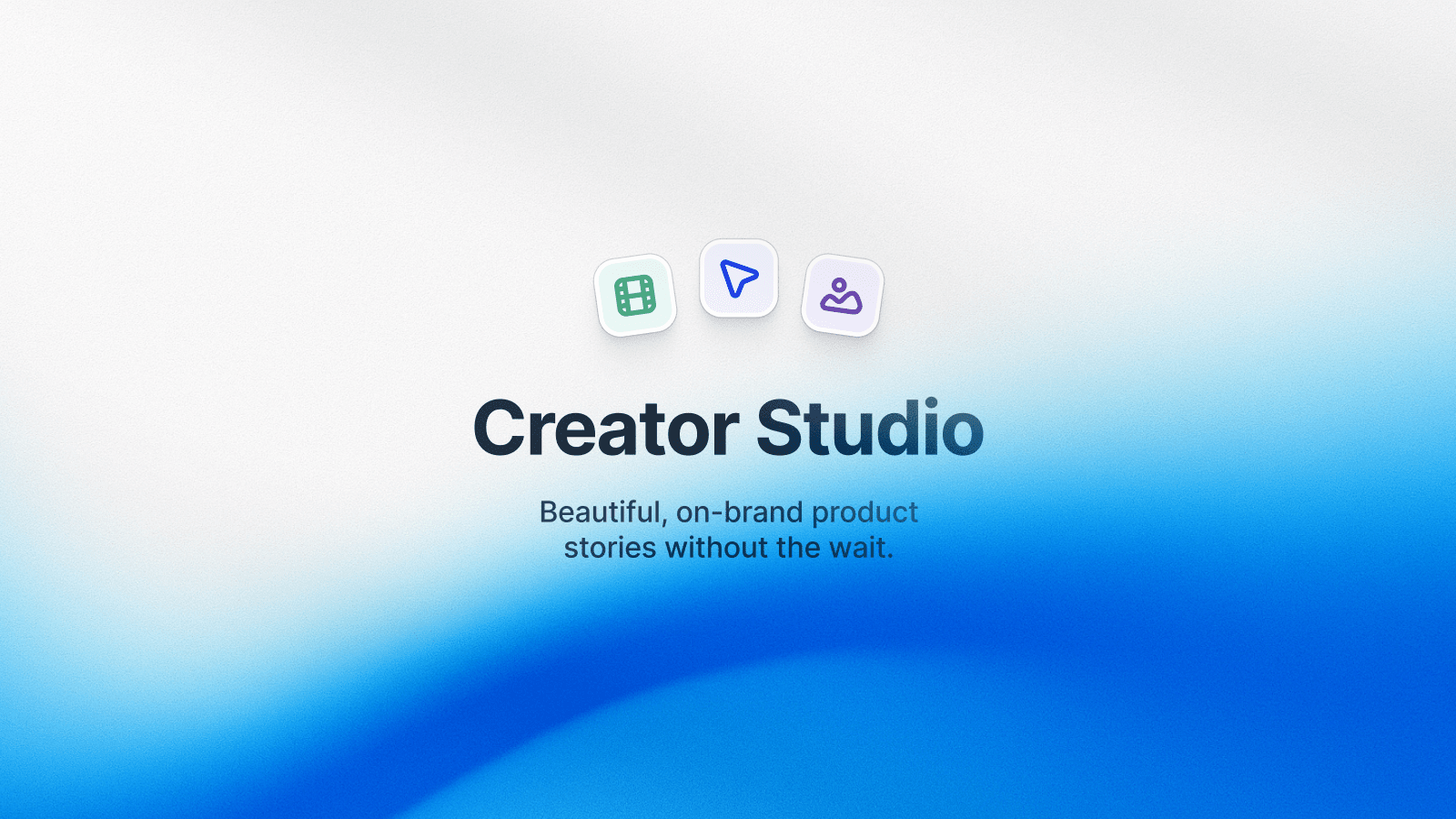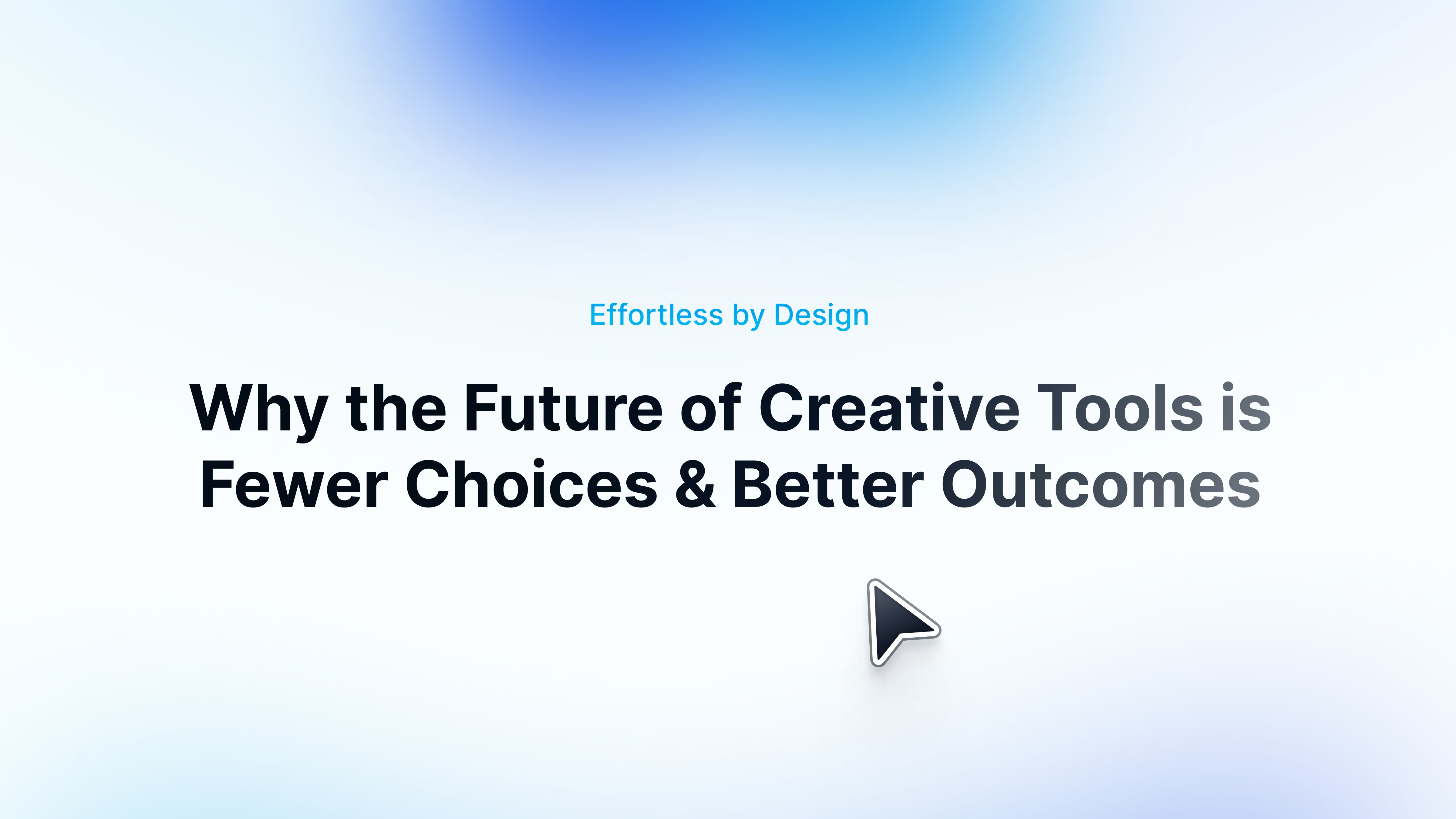TL;DR: Even the best GTM teams face demo nightmares, from haunted handoffs to vanishing visibility. These fears are all too real, but the fix doesn’t have to be frightening. With the right demo workflow, you can turn chaos into confidence and storytelling into scale.
- Scattered ownership and outdated decks make it difficult to deliver a consistent buyer experience.
- Centralizing demo creation, collaboration, and analytics helps teams update once and stay aligned everywhere.
- When your demo process runs smoothly, your story stays sharp and your pipeline keeps moving.
Fear Factor: The Product Demo Edition
Somewhere deep in your shared drive lies a graveyard of forgotten demos. Decks that died mid-edit, videos that aged faster than the product they were built to showcase, and fragments of stories once told with conviction, now collecting digital dust.
You can almost hear the echoes: “Who owns this?” “Is this the latest version?” “Did we ever update that feature?”
That’s where the real horror lives for today’s GTM (Go-to-Market) teams.
Below, we dig into five demo nightmares that just never seem to die — and uncover how you can stop them from haunting your workflows once and for all.
Fear #1: The Haunted Version History
The nightmare: Every update sparks another round of edits, feedback, and “quick fixes” that spiral into a full rebuild (we shudder at the thought). Decks multiply, filenames blur, and what started as a small adjustment becomes an endless loop of revisions.
Eventually, no one’s sure which story is up to date or who owns the final say.
Why it’s scary: When demo versions live across scattered decks, videos, and outdated sandboxes, GTM teams spend more time managing iterations than refining their story. Inconsistencies creep in, control disappears, and buyers experience a fragmented view of the product. What’s meant to be a single, unified narrative turns into a patchwork of partial truths, with each one slightly out of sync with the next.
The cure: Bring your demo creation process into one connected system with a centralized workflow to ensure every stakeholder from marketing to sales to enablement works from the same foundation. Updates happen once – not in ten different places – and the story evolves cleanly alongside the product. Your demos stay current, your teams stay aligned, and your product story finally rests in peace.
Fear #2: The Vanishing Buyer
The nightmare: It seems like the sale is off to a great start. The demo lands, your buyer’s engaged, and questions are asked that show genuine curiosity. But then.. the momentum vanishes. Days pass, messages go unanswered, and what felt like a promising conversation fades into an eerie silence.
Why it’s scary: When the meeting ends, your visibility into the buyer’s side of the process ends with it. You don’t know if the demo was shared internally, or which parts of the story actually resonated enough for a second take. Without that insight, even the best follow-up becomes a shot in the dark. Every unanswered email chips away at confidence, and before long, your once-enthusiastic prospect has disappeared into the ether.
The cure: Make your demos interactive and trackable so the story doesn’t risk ending when the call does. Engagement analytics reveal who’s viewing, how long they’re exploring, and what draws the most attention. With those insights, you can tailor your follow-ups to fit what matters most, re-engage buyers with relevance, and replace silence with next steps.
Fear #3: The Frankenstein Effect
The nightmare: Product marketing builds a demo, Sales tweaks it, and the Solutions Engineering team scraps it all and rebuilds from scratch. Product sees it later and barely recognizes what’s on screen. What started as a single cohesive story has turned into four competing versions, each slightly different and none quite right.
Why it’s scary: Fragmentation kills consistency, and with it, your story’s credibility. Every handoff opens things up to interpretation, and every tweak introduces just a little more drift. Soon enough, your once-aligned GTM narrative resembles a Frankenstein’s monster of mismatched slides and random screenshots. Buyers notice the seams in the form of missing context, and inconsistencies between what they saw last week and what they’re seeing now.
The cure: Build shared demo workspaces where teams collaborate in real time and stay aligned on the story you’re telling. Clear roles, defined review processes, and structured approvals keep your product narrative consistent from start to finish. When every contributor works from the same foundation, your demos stop feeling like a science experiment gone wrong and start bringing to life the product story they’re meant to tell.
Fear #4: The Data Blackout
The nightmare: You know you’re telling great stories, but you can’t prove they’re working. The demos look polished, the feedback sounds positive, and yet, what happens next is anyone’s guess. Once the link is shared, all you’re left with is a good feeling instead of a clear picture – and in today’s market, that’s not enough.
Why it’s scary: Without visibility into demo performance, you can’t tell which moments captivate and which cause buyers to drift. You don’t know how far they explore, what they revisit, or whether your story ever makes it to the decision-maker’s screen. Over time, those blind spots compound, leaving GTM teams to plan, prioritize, and forecast on instinct alone.
When teams lose that line of sight, confidence erodes. Marketing doesn’t know which narratives drive engagement, Sales can’t tailor follow-ups to what resonated, and leadership struggles to connect demos to revenue outcomes. The story may sound good, but without data to back it up, it stops moving the business forward.
The cure: Bring your demo data back from the dead by tracking engagement from first click to final decision. Analytics reveal which screens draw the most attention, where interest drops, and how interactions translate to opportunity. That clarity gives every team the ability to see what’s working, refine what isn’t, and measure storytelling in business terms. And when insight replaces assumption, the only thing left in the dark is your competition.
Fear #5: The Product Story That Lost Its Soul
The nightmare: Your product evolved, but your demo didn’t. What once felt vibrant and relevant now feels outdated, a time capsule of what your product used to be rather than a reflection of what it’s become.
Why it’s scary: Your product has heart, solving real problems and creating real impact for your customers. But when your demo doesn’t keep pace, buyers can feel the disconnect. They see features from another lifetime, workflows that haunt rather than help, and messaging that feels like an echo of what once was. Each outdated element drains the life from your story, weakening its credibility and your buyer’s confidence. What should be a moment of conviction instead becomes one of doubt.
A stagnant demo becomes a relic of the past, and in a world where buyers move fast, stories that don’t keep up with the product’s evolution are quickly left for dead.
The cure: Reimagine your demo as a living storytelling asset that stays in lockstep with your product. Keep it in step with every release, every customer insight, and every market shift so it always feels current, intentional, and alive. Treat it like an evolving narrative, not a one-time project. When your demo matures with your product, your story regains its pulse to become more authentic, dynamic, and impossible to ignore.
Face Your Fears — Then Fix Them
Every GTM team battles its own version of the demo dark side. The difference between those who struggle and those who scale, however, comes down to one thing: the winners face their fears head-on and build smarter systems around their storytelling.
When the systems align and the story comes alive, there’s suddenly nothing left to fear and everything to gain.
If you’re dying to turn your demo nightmares into dream experiences, get in touch with one of our Arcade experts and see how Arcade can help bring your product story to life.
Frequently Asked Questions
What are the most common problems with product demos?
The biggest demo challenges usually come down to process, not product. GTM teams struggle with scattered ownership, outdated decks, and inconsistent updates that lead to mismatched stories. Without a centralized demo workflow, it’s easy for teams to lose version control, visibility, and buyer engagement.
How can I make my product demos more consistent across teams?
Start by creating a shared demo workspace where marketing, sales, and enablement teams collaborate from the same foundation. Defining roles, approval workflows, and review checkpoints ensures every version tells a consistent, credible story — no matter who’s presenting it.
How do I measure whether my demos are actually working?
Use engagement analytics to connect demo activity to real pipeline outcomes. Look for metrics like time spent, sections viewed, and replays to understand what captures buyer attention. With that visibility, teams can refine their storytelling, personalize follow-ups, and focus on what moves deals forward.
What’s the best way to keep product demos up to date?
Treat your demo like a living storytelling asset. Update it with each product release, new customer insight, or market shift so it always reflects your current value. When your demo evolves with your product, it strengthens credibility, deepens buyer trust, and ensures every story feels fresh and relevant.
How can better demo workflows improve my GTM performance?
A clean, connected demo process improves speed, alignment, and visibility across teams. Centralizing creation and analytics helps GTM teams update once and scale everywhere — reducing friction, building consistency, and turning demos from bottlenecks into growth accelerators.








